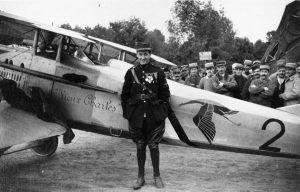The French Nieuport 24 was introduced into Allied air services as a Type 17 replacement but it proved inferior to the next generation of British fighters, although the upcoming SPAD VII and SPAD XIII biplanes, powered by Hispano-Suiza motors, became a real force to be reckoned with. The latter, armed with twin synchronised Vickers machine guns, was a firm favourite with top French pilots. One of the leading French SPAD exponents was Georges Guynemer whose outwardly frail physique belied an intense inner strength and resolution. Among many compatriots who regarded him in awe and admiration was Henri Cessieux who recalled an occasion when his own escadrille had unsuccessfully engaged a German patrol. The scrap was witnessed from the ground by Guynemer who later telephoned the unsuccessful pilots on their return, bawling them out for not having got close enough to the enemy. Flying the SPAD VIII, and ultimately the XIII, Guynemer’s victory tally began to rise. Two days after his 21st birthday, he claimed his 24th victory, and was promoted to Lieutenant as a result. In the first weeks of 1917, the redoubtable Guynemer had brought down five two-seaters. He took little pride in such victories, to him it:
‘was simply murder to bring down the poor old observation planes but in view of the consequences of observation to artillery and infantry, it was necessary to repress one’s natural repugnance to engage in such unequal combats’…
By August his score had risen to 54 but the continued strain was taking its toll. He did not expect to survive the war and his premonitions proved tragically correct when he was killed in the air over Poelcapelle in September 1917.

